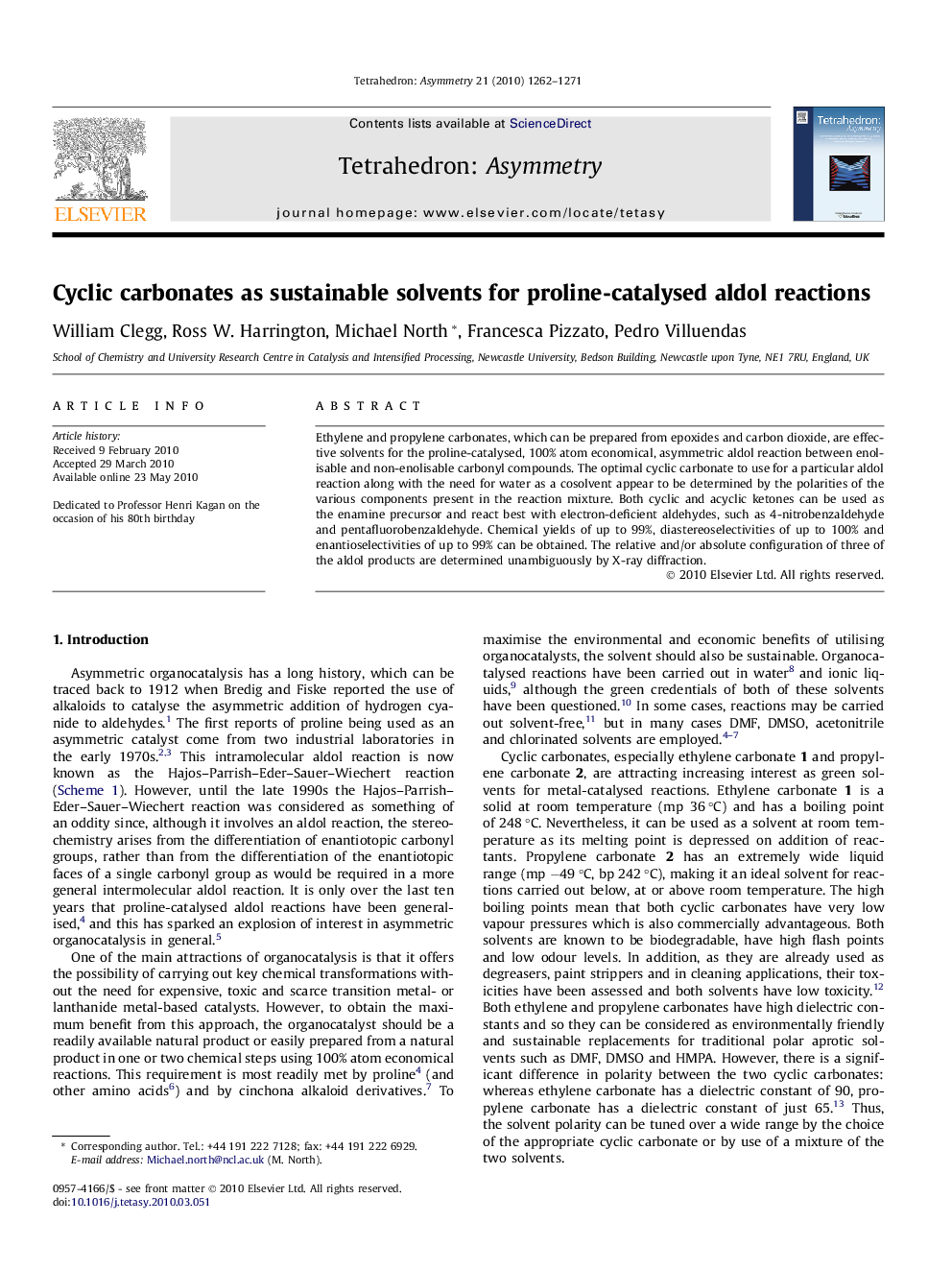| Article ID | Journal | Published Year | Pages | File Type |
|---|---|---|---|---|
| 1344733 | Tetrahedron: Asymmetry | 2010 | 10 Pages |
Ethylene and propylene carbonates, which can be prepared from epoxides and carbon dioxide, are effective solvents for the proline-catalysed, 100% atom economical, asymmetric aldol reaction between enolisable and non-enolisable carbonyl compounds. The optimal cyclic carbonate to use for a particular aldol reaction along with the need for water as a cosolvent appear to be determined by the polarities of the various components present in the reaction mixture. Both cyclic and acyclic ketones can be used as the enamine precursor and react best with electron-deficient aldehydes, such as 4-nitrobenzaldehyde and pentafluorobenzaldehyde. Chemical yields of up to 99%, diastereoselectivities of up to 100% and enantioselectivities of up to 99% can be obtained. The relative and/or absolute configuration of three of the aldol products are determined unambiguously by X-ray diffraction.
Graphical abstractThe polarities of the cyclic carbonate and substrates determine which cyclic carbonate is the optimal solvent for a particular aldol reaction.Figure optionsDownload full-size imageDownload as PowerPoint slide
(R)-4-Hydroxy-4-(pentafluorophenyl)-2-butanoneC10H7F5O2[α]D20=+6.7 (c 0.1, CHCl3)Absolute configuration: (R)
O-[(R)-1-(Pentafluorophenyl)-3-oxobutyl]-N-(4-bromophenyl) carbamateC17H11BrF5NO3[α]D20=+56.0 (c 0.1, CHCl3)Absolute configuration: (R)
